


Meet 31 Scholarship Recipients for the 2010 School of Authentic Journalism
They'll Gather for Ten Days of Intensive Training, February 3 to 13, on Mexico's Yucatán Peninsula
By Al Giordano
President, School of Authentic Journalism
November 15, 2009
They work or hail from 24 countries across the five major continents. They investigate and write news reports, create documentary films and viral videos, and among them are up-and-coming pioneers of Internet journalism. Many of them do that through multiple forms of media. They hush the imposed silences from above and make the voices from below heard. They are aged 18 to 65, from diverse economic, social, political and demographic backgrounds. And each one’s experiences are compelling and unique.
The Class of 2010 of the Narco News School of Authentic Journalism that will convene next February on the Yucatán Peninsula of México humbles me. There is no way that in these brief introductions I give each of them below that I can do any single one of them justice. All I can do is give you a small glimpse at their skills, their passions, their commitment to authentic journalism and social justice; a taste of what you’ll be getting back from them, again and again, not just in February, but in the years to come.
Thankfully, none of these talents of conscience need me or anyone else to speak for them. They were chosen because they are already maestros at presenting themselves and the stories they report and care deeply about.
As you read a little about them here, please think about supporting them – as individuals and as a group – so that each can fully realize his and her scholarship and become even better, faster and more coherent than they already are at this work.
Everybody complains about the media, and for good reason. Here are the people who, together with the Narco News Team and our amazing roster of volunteer professors, are doing something about it.
Ladies and gentlemen: It is my distinct honor to present to you… The future.
Soraya Aguilar, 35, La Paz, Bolivia
 |
“Here in Bolivia we work in a team and the most important thing that life has given me is a beautiful group of humans capable of winning what it wants because we are consistent and we know what we want, and, most importantly: ‘We live to serve, and not to be served.’”
It was a time when Bolivia lived through political crisis after crisis, and Soraya, then the communications director for then-Senator Filomeno Escobar, had to make a choice between remaining at her post or attending the School that July and August. Sometimes an authentic journalist, too, must remain at his and her post, especially during hours of moral crisis. Soraya made a personal sacrifice for the greater good of her country and its peoples, living her words, above, about working in a team.
In the following years, Soraya directed communications for the Comité Impulsor del Juicio de responsabilidades a Gonzalo Sánchez de Lozada y sus Colaboradores, the popular social organization that has sought that the former Bolivian president by that name face legal trial and judgment for his crimes ordering the 2003 El Alto massacre (63 deaths and more than 400 wounded) during the “gas wars” of Bolivia. Last week, almost at the same time that we called Soraya to invite her back to the School of Authentic Journalism, the US Southern District Court of Florida ordered that Sánchez de Lozada, a.k.a. “Goni,” must face a civil lawsuit by family members of the martyrs he created. And he now becomes a defendant in the US, where he went to seek to evade his responsibilities under the law.
What some might not yet know about Soraya is that she also one of the continent’s foremost experts on Latin American and indigenous cinema. She leads training sessions for indigenous filmmakers as part of the Festival de Cine Indígena. We’re very pleased to finally be able to invite her back to the Narco News J-School to learn and teach alongside the rest of the Class of 2010, which we introduce to you today.
Please support Soraya’s scholarship via this link:
Maylin Alonso Chiong, 26, Havana, Cuba
 |
In answer to a question on our application about whether there is any kind of speech that should be prohibited in a school of journalism, Maylin responded:
“It is in journalism schools, above all, where we must foment freedom of expression and of creation of styles. I never had a greater moment of freedom than in my time as a student, when we were permitted to dream without a salary, nor a punch clock, nor ‘editorial policies,” nor ‘productive routines.’ It was during that time in which we still didn’t know the rules and yet we wanted to break them, convinced that we will usher in a different kind of journalism. It was during that time when we all felt the journalistic ‘sense of smell’ and ‘journalistic vision’ open within us; that time when, in sum, we contracted an irreversible infirmity that we will suffer forever: that of never again alienating ourselves from reality through a critical or analytical sentiment.”
Please support Maylin’s scholarship via this link:
Edwin Alvarez, 27, La Ceiba, Honduras
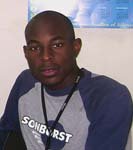 |
In response to a question on our application about whether there is a difference between an activist and a community organizer, Edwin replied:
“Community organizers are those who fill the holes left by the government and private sector. They are those who help the common people to change their block, their neighborhood, their city, even their country. They are those who show up to confront absentee landlords, who mobilize others in favor of our parks or who demand responsibility from dishonest politicians. They are those who need the neediest.”
Authentic journalists are also among “those who need the neediest,” and who also need to better understand the strategic dynamics of community organizing and civil resistance movements. In that sense, Edwin comes to the 2010 School of Authentic Journalism not just as a student, but also with much to teach.
Please support Edwin’s scholarship via this link:
Sibi Arasu, 22, New Delhi, India
 |
This year’s School of Authentic Journalism application included an essay requirement that asked a series of questions regarding 2009 civil resistance movement in Honduras and Iran, including, “does a civil resistance movement become illegitimate, or less legitimate, if it happens to resist against a regime that is also opposed by a foreign government?” Sibi wrote:
“If a civil resistance movement is being explicitly underplayed primarily because it is opposing the same government that is being opposed by a foreign power too, then I would be more than careful to ascertain the facts behind such a claim before I proclaim the movement itself to be a tool of the foreign government. To answer the question about legitimacy, I don’t think it undermines the legitimacy of any movement, if the movement is fighting a government that is also being opposed by a foreign government. I think it boils down to the nature of the civil resistance movement and the purpose of its fight…”
Please support Sibi’s scholarship via this link:
Noha Atef, 25, Giza, Egypt
 |
With a keen understanding that today’s journalist must “multi-task,” utilizing different kinds of media and “do it all,” Noha noted that if she ever found herself in a country where a popular civil resistance movement erupted, these some of the steps she would take as a journalist:
“First of all, I’d check my tools of connection with the outside world, the modern electronic tools, such as the Internet and mobile phone along with the traditional ones like fax and landline phones. And I would be cautious before mentioning my profession as a media person, in order to maintain my stay… I’d use Twitter and mobile videos for constant updates, as well as conduct interviews (with a good mobile camera) with both protestors and their repressors, and at the end of each day I would delete the videos from my mobile after copying them to my laptop desk and backing them up. Out of the videos I would make video reports.“I’d go to the places that were not reached by the media, like the hospitals where the injuries were treated, and the very poor districts where I’d investigate whether their inhabitants are participating in the protests and would listen to their opinions. In every place I’d would go, I would be the ‘foreigner woman wants to know what’s going on’ in front of some people and the ‘journalist who can voice her opinion’ in front of others…”
Please support Noha’s scholarship via this link:
Sandra Cuffe, 28, Canadian reporting in Honduras
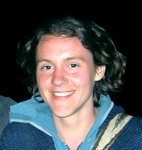 |
Fluent in Spanish, English and French, Sandra headed back to Honduras – a land where she had lived more than four years previously – five days after the June 28 coup d’etat, where she both reported the stories that the regime sought to censor, and served as a vital guide to many other international journalists to help them – often, force them – to better understand the land, its peoples, and the news that they would report. A shining example of our credo that an authentic journalist must “look below” and accompany movements at the grassroots level to be able to fully understand events, Sandra writes:
“Most of my visits to courtrooms and jails have been in a support capacity for political prisoners. The first jail I visited was in southwestern Honduras to meet the imprisoned indigenous council leaders of Montaña Verde. I visited them on a regular basis for years, brought delegations to visit them and show international support to jail officials, attended their court appearances, accompanied legal proceedings in the community itself, and met with Supreme Court judges concerning their case. I have since visited numerous political prisoners and detainees in prisons, police stations, courtrooms and beyond in different regions of Honduras as well as in Canada. It is always an act of solidarity, sometimes just by visiting, but more often also to make outside support visible, to collaborate with human rights organizations, to conduct interviews and/or to report on their situation.”
Please support Sandra’s scholarship via this link:
Jeremy Dupin, 25, Port-au-Prince, Haiti
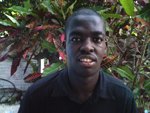 |
“I had my first experience as a journalist at the age of 13, in a radio and television network called “Radio Tele-Niño,” created by President Jean Bertrand Aristide. In 2006 I attended a one-month workshop in Caracas offered by Vive TV on audiovisual production and community media. I also work as a volunteer in different neighborhoods of Port-au-Prince organizing the poor of the community to work together to solve their problems.”
Please support Jeremy’s scholarship via this link:
Oscar Estrada, 36, Tegucigalpa, Honduras
 |
And written reporting is not Oscar’s only medium. Director of the 2003 documentary, El Porvenir, about the massacre of 69 inmates at the prison by that name outside of La Ceiba, Oscar’s video work with the Gremio de Cineastas and others in Honduras has shown the country and the world the truths that commercial media has not told about life under a coup regime. Oscar writes:
“Since June 28, I immersed myself fully doing all that I know how to do: Videotape the many activities of the resistance and write reports about it. With those we have succeeded, together with other communicators in the country, in making sure that Honduran history doesn’t become lost among many stories that never get told… Honduran TV and radio stations are held hostage by economic powers and, with them, the truth. Breaking this blockade will have to involve more radical acts of communication. Making use of pirate or ‘illegal’ radio signals will allow the news to reach more people throughout the country…“I believe that the ‘objectivity’ of reporters is a myth, an ideal that has been taken by the owners of big media to impose a political position that is opposed to the interests of the people.”
Please support Oscar’s scholarship via this link:
Paul Findley, 65, Round Mountain, California, US
 |
“I live in rural northern California, a very conservative part of the state. As I observe the day-to-day workings of our local politicians and their administrations, I note a pronounced pattern of low awareness of and insensitivity to social justice issues and race relations. Often, organized actions for social justice are ignored or remain underreported, thus maintaining the illusion of tolerance and further marginalizing these essential voices.“With the use of video journalism, interviews and reports from public meetings, I would like to expose the offensive practices of the power structure that employs this censorship and misrepresentation of the facts. I travel to many places across the country, including Indian reservations and large cities, where I can engage in opportunities to document people’s struggles to bring change.”
Please support Palo’s scholarship via this link:
Teresa García Moreno, 26, Albecete, Spain
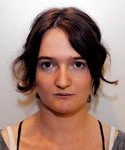 |
“With the Internet, the advantage of communication has ceased to be the exclusive realm of professionals. This is the principal change that characterizes the world in which we live since a few years ago, and every day it becomes more evident in so many different forms. Today, the democratization of information also brings its dangers of mass disinformation and a lack of credibility: In sum, confusion. However, the advantages outweigh the disadvantages. The opportunity now exists that the truth can leap forward at moments when the mass media closes its mouths thanks to new tools that are at the hands of almost any person, making it more difficult for governments to manipulate or cover their dirty laundry, locally or worldwide.”
Please support Teresa’s scholarship via this link:
Karina González, 22, Guanajuato, México
 |
“In Mexico there have been various cases. One very clear one was how the news was reported on October 2, 1968, in which the news media, instead of informing, censored the free expression of the young students. The television networks, paid by the government, called them trouble makers for confronting the government of Gustavo Díaz Ordaz and that the president was in the right: something that obviously was not true but many people believed it because the TV said so. The damage done was that many people never learned the real motives of the protests, or the real number of deaths, to this very day.”
At the 2010 School of Authentic Journalism, Karina and the other scholarship recipients will meet, hear from, and converse with our senior professor, Mario Menéndez Rodríguez, whose newspaper, ¿Por Qué? in 1968 was the only Mexican publication to break the information blackout and publish the photos and testimonies of that historic massacre, making it known to the country and the world.
Please support Karina’s scholarship via this link:
Manasi Gopalakrishnan, 30, Indian reporting from Berlin
 |
“In my view, any resistance big or small should not be ignored as it is representative of a group of people who think that way. It does not matter how big or small the group is, but in a functional democracy the government must have the ability to listen to dissent and even tolerate it, although this is rarely the case… As I have already mentioned, any resistance is worth reporting about, so there is no question of any legitimacy.”
Please support Manasi’s scholarship via this link:
Katie Halper, 28, New York, US
 |
“Constructed after the Spanish Civil War under the pretext of reconciliation, Spain’s largest monument was built by political prisoners in concentration camp conditions and came to house the tombs of Spain’s two most prominent fascist leaders, Jose Primo de Rivera and Francisco Franco. Through interviews with the remaining ex-political prisoners who built the monument and current members of Spain’s fascist party, this film reveals the untold story of this pharaoh like monument, shedding light on the Franco dictatorship and its legacy in Spain today.”
Skilled in the online tools of blogging and use of Twitter (where she has more than 500 followers of her “tweets”), Katie is the ultimate multi-tasking twenty-first century communicator. Asked what she would do if a civil resistance movement emerged in her own land or one she was visiting, Katie wrote:
“If I were brave enough, I would try to interview as many people as possible to record what was happening on the ground. I would do this on a flip cam so I could easily upload and email around the video content. I would also try to get out information via subtle satire, which would get past censors. And I would, of course, tweet.”
Please support Katie’s scholarship via this link:
Shazia Hazan, 41, Karachi, Pakistan
 |
“Giving up my education at an early age, I am entirely self-taught. Today my younger cousins and the rest of the family and friends, who had seen me cooking, doing dishes, washing clothes and floors, etc., are surprised to see me in the role of a successful journalist, who is occasionally also called on TV as an expert. They had had no expectations from me and had pretty much judged me as a simpleton. It has taught me and them, too, not to judge anyone. People have unlimited potential to improve on themselves as well as change the lives around them.”
Shazia is also a practitioner of karate.
Please support Shazia’s scholarship via this link:
Joaquín Ramón Herrera, 40, Eugene, Oregon
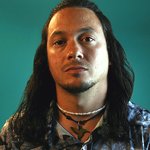 |
“All my life, the media—books, movies, advertisements, jokes—had convinced me of a disgusting image of Mexico and Mexicans and Mexicanidad. That’s just my personal story, and that’s only a small piece of it. But the harmful part comes when you think of this messaging being broadcast far and wide. And that is what much of our corporate media does. In dribs and drabs, here and there; in what they focus on, on what they leave out, on what they repeat. I do not feel hyperbolic in saying that I think this misuse of a lens is accomplice to murder and suicide in many cases, given the long arc and the sociological effects on a large number of people.”
Please support Joaquín’s scholarship via this link:
Ansel Herz, 21, Texan reporting in Port-au-Prince, Haiti
 |
“The most disenfranchised of any society tend not to have hidden agendas – they need basic improvements in their lives and usually know what is in their interest. As a journalist I would talk to the poor and under-represented, and perhaps center of my reporting around their voices. I believe this strategy would have served me well in 2004 in Haiti, and in 2009 in Iran and Honduras. In trying to determine the authenticity of a civil resistance movement today, I might ask these questions. Are the individuals and groups leading the movement ‘astro-turf’ or truly grassroots? Are there organized communities of ordinary citizens behind them? How are they funded? Do these groups, in general, operate democratically? Are they demanding greater centralization or decentralization of power?”
Please support Ansel’s scholarship via this link:
Amanda Huerta Morán, 27
Venezuelan reporting in Asunción, Paraguay
 |
“One event in particular marks my vision in respect to journalism. While my father convalesced from an attack he suffered at the hands of a paramilitary gunman, a reporter from a channel called Venevision tried to interview him in the hospital where he was recovering. With a notable arrogance, she burst in the room where I was with my father and in a loud voice she pushed the microphone forward and began to pepper him with questions. She then said, ‘Sir, please, speak faster – this is television!’ I threw her out of the room while she shouted senselessly, including profanities. That was the day I learned what a journalist NEVER should do. Journalism should be, above all, humane.”
Please support Amanda’s scholarship via this link:
Jillian Kestler-D’Amours, 22, Montreal, Canada
 |
“At the beginning of my university degree, I dreamt of writing for a large mainstream newspaper or working for the Canadian Broadcast Company (CBC), Canada’s national public broadcaster. Today, as the end of my degree nears, my dream has changed.“I now hope to investigate social justice issues from around the world. I want to affect positive change and improve people’s lives through my writing. And above all else, I hope to be satisfied and proud of my work, and be able to go to bed at night knowing I’ve made a difference.”
Please support Jillian’s scholarship via this link:
Sebastian Kolendo, 21, Eau Claire, Wisconsin, US
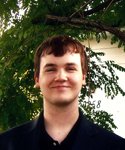 |
Like many of the scholarship recipients you’re reading about here, Sebastian has been invited to the school to learn but also to teach. Authentic journalists need to, at minimum, understand how Wikipedia and other engines like it work, and, ideally, how to participate in it ourselves as a bulwark against those hired guns and professional simulators that so often attempt to distort its definitions of the events, people and movements we report: that is much easier accomplished by many hands working in unison than by one set of typing fingers working alone. Sebastian is the right person at the right time to equip all our professors and students with those tools and skills. And he profoundly “gets” what the Authentic Journalism Renaissance is fundamentally about. He writes:
“Part of the mission of authentic journalism is to fill in the many gaps left by corporate media. It has become easy for news agencies to report on speculation, on the story ‘up above,’ and to ignore on-the-ground reporting where the nuances of a peoples’ struggle conflict with the conventional wisdom. Because news agencies define what makes ‘conventional wisdom,’ readers are left at their mercy.“There are only a few recent exceptions where on-the-ground reporting has taken primacy over the talking heads of anchors, pundits, and analysts. When the regularly scheduled vicarious banality of mainstream news is factored out, perhaps there is just the one: The June 13 Iranian election and its fallout. For the first time in years, the West saw what it was like to be truly on the ground among the people. But the events of the Iranian election did as much to exemplify on-the-ground reporting as it did to exemplify the state of mainstream news. When reporters working for media agencies were kicked out of the country or bound to hotels, the networks did an amazing thing: they ceded their control over the news, and gave it to the people. Almost everything we know about the Iranian election came from YouTube videos and Twitter feeds. The rest was to connect the dots, a task the mainstream media has largely given up on. And for a short while it seemed like a resurgence.”
Please support Sebastian’s scholarship via this link:
Marine Lormant Sebag, 24, French filmmaker in New York, US
 |
“I think that bad journalism often harms individuals, communities, countries and the whole world and, in general, this is owed to the fact that journalists publish news without verifying the facts; simply repeating the information they are given without seeking out the truth on the ground.“One of the largest examples is that of the war in Iraq. Bush declared war against Iraq saying it had weapons of mass destruction. And the great majority of journalists published those claims without verifying them.”
Please support Marine’s scholarship via this link:
RJ Maccani, 30, New York, US
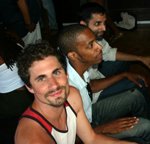 |
RJ volunteered to participate in our Oaxaca coverage and organized the Ricardo Flores Magón brigade among reporters, photographers and others to provide full coverage of those events, a historic week in which, for the first time in decades, many indigenous, farmer, labor, NGO, youth collectives, and other social organizations came together to speak – and listen – to each other. When it happened, in large part thanks to RJ’s organizing efforts, Narco News’ Other Journalism project had 22 reporters on the ground throughout the state. Those meetings would plant a seed that sprouted three months later when a teachers’ strike exploded into a statewide cause and led to the formation of the Popular Assemby of the Peoples of Oaxaca (APPO, in its Spanish initials).
We’ve wanted to invite RJ to the School of Authentic Journalism ever since. We’re pleased to be able to do so next February. In his application, RJ wrote:
“To be an authentic journalist is important, but it is not enough if we are not also effective. Telling the story of a civil resistance movement will require of us not only to be honest and well versed in the history and current reality of a society, but also that we have the skills and resources to outmaneuver news simulators and hostile governments, and reach broad audiences in a way that not only informs, but mobilizes them to take action in support of authentic civil resistance movements.”
Please support RJ’s scholarship via this link:
Wendy Martínez, 27, La Ceiba, Honduras
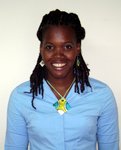 |
“A well known journalist, on his news program, gave a report that claimed that a majority of Garifunas are carriers of the HIV virus. Reports like that and others reveal the use of racist expressions by some journalists… Day after day, the rights of our Garifuna communities are violated… and not only are we unrepresented in the media but also in the process of developing our country.”
Please support Wendy’s scholarship via this link:
Geovani Montalvo, 18, La Libertad, El Salvador
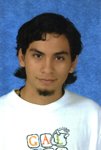 |
“Generally, the traditional media take as their principal source the ‘official’ sources, bumping other valid actors to the second page. This obligates those other actors to seek methods to distribute information from their focus and interest through tools like the Internet… As a journalist, I feel committed to the marginalized sectors, those who are not on the agenda of the traditional media.”
Please support Geovani’s scholarship via this link:
Kara Newhouse, 22, Pennsylvanian reporting in Guatemala
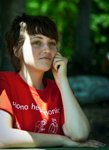 |
“I am a journalism school dropout. I entered university expecting to complete a degree in journalism, but after two years I switched my major to anthropology based on two frustrations. First, the American University School of Communications requires students to specialize in print journalism, broadcast journalism, visual media, or media studies. I did not want to narrow my range of skills in that manner. I want to be able to use whatever skills and media are most appropriate and accessible to report on a situation. Second, I grew tired of my professors preaching a false objectivity of the press. My academic analysis of The New York Times coverage of the outbreak of HIV in the 1980s and 1990s told me what I already knew: the U.S. commercial press covers serious issues only when they become relevant to its wealthy, majority-white target audience. That is not objective news coverage.”
Please support Kara’s scholarship via this link:
Thomas Quirynen, 26, Belgian reporting in Perú
 |
“At 0600 on the morning of June 5th, Thomas and Marijke received a call in Jaén, warning them that police had started to clear the Indians’ blockade on the section of the Fernando Belaunde Highway known as ‘Devil’s Bend’, and that there were already casualties. They rushed to the scene, accompanied by two reporters from the TV station Frequencia Latina: Marijke and Thomas arrive at the bridge known as ‘Corral Quemado’. The police stop their car, so they proceed by foot and motorbike-taxi to ‘Devil’s Bend’…”
On that date, Thomas received a crash course in journalism and, with it, a ground-level view of the contradictions inherent in so much of the commercial media. He writes:
“I also came in contact with journalists and media that were clearly influenced by politics. A reporter of Frecuencia Latina – the only national television channel of Peru present the 5th of June – called his head office asking them to put him live on air because he was standing in the middle of the action, but they refused. The material he collected during the day was, apart from a twenty-minute report, not broadcast. And the same journalist called me the following day, begging me to send him my photos, because although he himself had seen ten dead civilians, his boss and the media in Lima in general claimed there were only three. They definitely harmed the indigenous communities in their struggle for respect and recognition.”
Thomas continues reporting from Perú. After attending our ten-day intensive training program in authentic journalism he expects to return there, with some new skills and the full backing of Narco News and its international network of mutual aid among journalists.
Please support Thomas’ scholarship via this link:
Hugo Ramírez, 26, Bogotá, Colombia
 |
“There are big lies repeated forcefully that ‘pass as truths’ in my country. One particular case has to do with the widely broadcast news in which President Chávez asked for belligerent army status for the FARC (Revolutionary Armed Forces of Colombia), a story that did much damage to Colombian-Venezuelan relations, and that distorted the original idea: One in which President Chávez requested that the FARC, instead of being declared a terrorist group – in which it is impossible for a head of state to negotiate with it. But for the Colombian media a relationship between Chávez-terrorism-FARC is claimed as a given.”
Please support Hugo’s scholarship via this link:
Edwin Reed-Sánchez, 28
Chicagoan reporting in Bluefields, Nicaragua
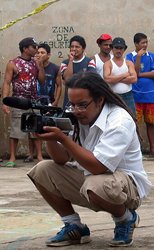 |
“Currently I would like to do more investigation on my ‘Monkey Point’ project, which includes various parties including government officials, capital investors, religious groups, and local indigenous communities. I am interested in learning more about writing, and creating a story. I have experience in documentary film-making, and Viral production, but would like to learn more about how to complete products, short or long format, that will be accessible to a mass audience.”
Please support Edwin’s scholarship via this link:
Mariana Simoes, 20, Brazilian reporting in New York and Venezuela
 |
“Honduras succeeded in breaking the information blockade not only through creative media coverage but through physical protest. Since the coup took place, the citizens of Honduras have not gone a single day without publicly expressing their discontent through nonviolent protests. This type of resistance is what I like to call the ‘hey, I exist’ resistance. The more they voice their issues the harder it is to ignore their discontent. If people scream loud enough and in a nonviolent manner they make themselves heard without producing mayhem and destruction. Pretty soon the whole world is likely to hear them screaming as newspapers, magazines and televisions everywhere broadcast their cries. As a journalist I feel obliged to speak on behalf of a country whose screams I could clearly hear from my own backyard.”
Please support Mariana’s scholarship via this link:
Milena Velis, 25, Chilean-born American reporting in Philadelphia
 |
“I think anybody can be a journalist in the larger sense of the word. Everyone is capable of learning how to use media and put their own knowledge to use communicating the reality that they live. That being said, I think that journalists should be people who are inherently suspicious of power, in addition to possessing all of the skills and abilities necessary for the craft, such as the ability to communicate a story in a clear and compelling form, research and digest information thoroughly and conduct effective face-to-face interviews with a wide variety of people…”
The work that Milena and the Media Mobilizing Project are doing has invented a new grassroots model for a journalism of the people. As with many of the “students” you’re reading about here, we look forward to learning from her, too.
Please support Milena’s scholarship via this link:
Omar Vera, 29, Bogotá, Colombia
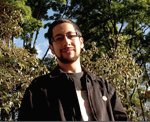 |
“In La Guajira, in 2007, I knew that the sound of an indigenous Wayuú woman who had lost six of her children at the hands of paramilitaries was an impossible sound to reproduce on paper, because it is charged with sadness, wisdom and serenity. It is not filled with rancor but, rather, with the thirst for justice. As a journalist, my form of viewing my work changed on that day, while I clenched my teeth so as not to cry, and thought about the best manner to cause those who read my report and see my photos to think about the horror that the mafias had sowed in this far corner of Colombia.”
With those words, Omar outlines part of the challenge for all of us who seek to practice authentic journalism.
Please support Omar’s scholarship via this link:
Now you’ve read a little bit about each of these deserving scholars and authentic journalists. And you’ve seen, under each of their descriptions, a button that asks you to donate to support their travel, food, lodging and other expenses to be able to attend this ten-day course.
If you can’t decide which to support (if you’re like us, they’re all your favorites) then contribute to them as a group, through The Fund for Authentic Journalism, with a donation, large or small, at this link:
http://www.authenticjournalism.org
Or send a check to:
The Fund for Authentic Journalism
PO Box 241
Natick, MA 01760 USA
(And if you want your mailed donation to be counted specifically toward the scholarship of any one or more of these authentic journalists in particular, just note that on the check.)
Each of these authentic journalism scholars completed a very lengthy application with an essay requirement. Many went through telephone and in-person interviews before they were awarded the scholarship. And the task of choosing between them and so many other also highly qualified applicants was arduous on our end, too.
And try to imagine what happens when all these talents of conscience join together for ten days and nights, dine and travel and learn and teach each other what they know. If you give generously to make sure we reach our fundraising goal, we will be able to share with you many of the classes and lessons of the 2010 School of Authentic Journalism through online video and reports, free of charge, multiplying the impact of the School thousands of times over, and bringing a great evolutionary leap to the Authentic Journalism Renaissance of which you, the reader, are its foundation, its pillar, and its reason for being.
Lea Ud. el Artículo en Español
- The Fund for Authentic Journalism
For more Narco News, click here.




